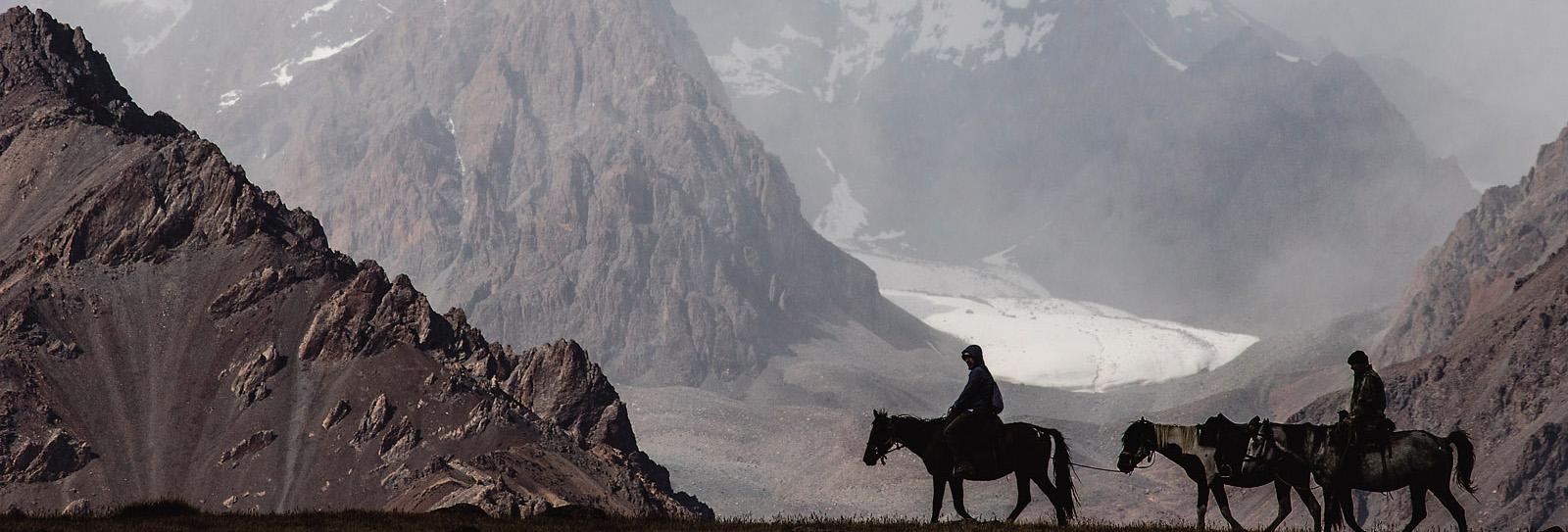
FirstLook: Kuylu Valley, Kyrgyzstan
- Arts
- Photography
1
Photograph by Stephen Lioy
Little explored for tourism and not a popular destination even among locals, this section of the Tien Shan mountains, some 360 kilometers east of Bishkek, Kyrgystan’s capital, lies near the border with China. We trekked down a rough pasture road off the highway that winds towards the village of Enilchek. With Kyrgyzstan’s borders effectively closed to tourists in summer 2020 because of the pandemic, many in the domestic tourism sector took to the mountains to find trekking routes and local travel destinations. Spurred by a pretty view from the bottom of the valley and tempting topography on the map, along with friends from Kyrgyzstan Tourism, we headed up the Kuylu Valley. On our final evening, while laying out our sleeping bags in a vacant hut, local shepherd Altyn (pictured here on the last horse) rode across the river and invited us to join him for a trip to his pastures the next morning.
Horses are excellent models but difficult photography platforms. As I often do in Kyrgyzstan, I rode with the group to the top of the valley to then dismount and take pictures on foot. At some point, as I wandered off from the group, I could see Kanat Murzabek uulu (here on the first horse) approaching and the composition forming. I raced ahead to frame the three horses against the backdrop of the 4,600-meter peaks of the Mola Valley behind them.
—Stephen Lioy
@slioy
stephenlioy.com
You may also be interested in...

FirstLook: Rain in Fayoum
Arts
I took this photo during a rainy day in November 2018 from the window of my family home in Fayoum, Egypt, located about 100 kilometers southwest of the capital. It hardly rains but a few times in the year in most parts of Egypt, and when it does, it is always something special, bringing Joy and happiness particularly for the local children.
FirstLook: "Arabs In America: Native Sons"
Arts
In 1975 AramcoWorld dedicated an entire issue to celebrating the lives of Arab Americans and their impact—from renowned heart surgeon Michael DeBakey to White House correspondent Helen Thomas to entertainer and St. Jude Children’s Research Hospital founder Danny Thomas.
FirstLook: Ramadan Picnic
Arts
On a warm June evening, people gathered at a park in Bethesda, Maryland, for a community potluck dinner welcoming the start of Ramadan.